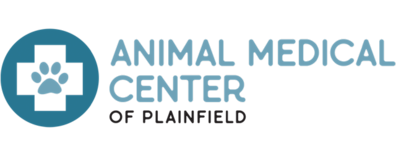What To Do If Your Pet Ingests Something Toxic: A Step-by Step Guide to Keeping Your Best Friend Safe
Pet Safety

Pets are curious creatures, and that curiosity sometimes leads them to eat things/come into contact with objects that can be harmful. If you suspect your cat or dog has ingested or inhaled something toxic, it's crucial to act quickly and calmly. Here's a comprehensive guide to help you handle the situation effectively.
1. Stay calm and assess the situation
Your pet's safety depends on your response. Take a deep breath and remain calm. Quickly assess what your pet has ingested, how much, and when, if possible. This information will be vital for veterinary treatment.
2. Identifying the toxin
Try to determine the substance involved. Common household items that are toxic include:
Chocolate
Grapes or raisins
Onions and garlic
Certain plants (like lilies for cats)
Human medications
Cleaning products
Pesticides
Large non-digestible objects (like socks or toys)
If you have the container or packaging, bring it to the vet for reference.
3. Do not induce vomiting unless directed
While inducing vomiting can sometimes be helpful, it should only be done under veterinary care/guidance. Never induce vomiting with hydrogen peroxide or other agents unless your veterinarian has directed you to. This can lead to further complications such as: inflammation to the esophagus/stomach, ulcers, aspiration (especially for brachycephalic dogs) and excessive vomiting. Additionally, certain objects cannot be thrown back up without causing more damage or potentially blocking your pet’s airway, causing your pet to aspirate (aspirate: to breathe in pieces of what they are vomiting, causing your pet to suffocate).
4. Contact Your Emergency Veterinarian and Emergency Animal Poison Control
Time is of the essence. Call your vet immediately and contact a pet poison control center. Crucial information includes:
Your pet's weight and age
The substance ingested
When it was ingested
Amount ingested
This information will help the veterinary team advise you on the next steps. The receptionist answering your call will likely instruct you to come in immediately and to call Pet Poison Control.
5. Monitor Your Pet
While en route to the vet or waiting for instructions, observe your pet for symptoms such as:
Vomiting
Diarrhea
Drooling
Lethargy
Seizures or tremors
Difficulty breathing
6. What to expect when you arrive at the Emergency Vet?
When you arrive at the vet, they will ask you to provide the information from Pet Poison Control (they will provide you with a case number to show your veterinarian) and then take your dog to the treatment area to assess their current condition. Depending on the condition of your pet, the doctor will reach out to Pet Poison Control to begin treatment that best resolves the issue. If you can provide: the time the item was ingested, as well as how much was eaten, your doctor may want to try to get your dog to vomit using a medication in-house that can safely induce vomiting. They also may want to start by taking X-rays to see where the toxin or object is if vomiting isn’t the best option. It all depends on the circumstances of each situation.
7. Prevent Future Incidents
Once your pet is safe, review your home environment to pet-proof and prevent future accidental poisonings:
Keep toxic items out of reach
Store chemicals and medications securely
Educate all household members about potential hazards
Create a "safe zone" for your pets
Read up on information regarding your specific kind of animal and what is toxic for them.
Remember: When it comes to poisoning, prompt action can make a life-saving difference. When in doubt, always consult your veterinarian or an emergency pet poison control center. Your quick response can turn a potentially tragic situation into a manageable one, ensuring your furry friend remains healthy and happy.
